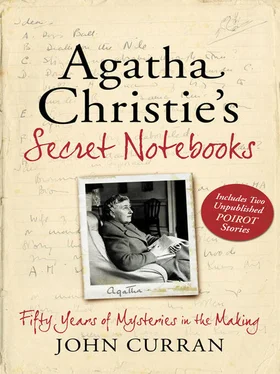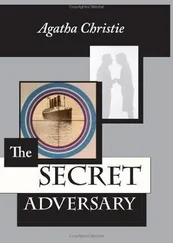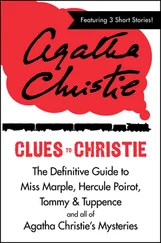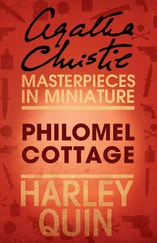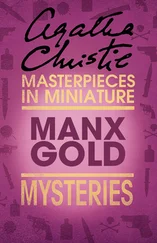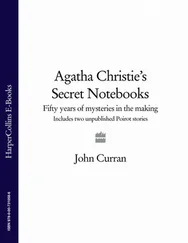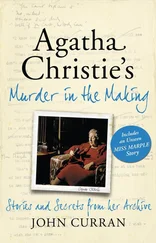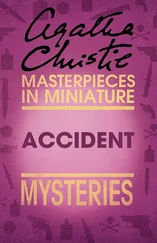It was on a subsequent visit the following year that I made what I now think of as The Discovery. I spent the month of August 2006 in Greenway sorting and organising Dame Agatha’s papers in preparation for their removal from the house before the restoration work began. Weekdays were often scenes of boisterous activity as surveyors and architects, workmen and volunteers could be found in any and every corner of the house, but weekends tended to be quiet and, although the gardens were open to the public on Saturdays, life in the house itself was more tranquil; indeed, so quiet was it, that it was possible to imagine that there was nobody else on the entire estate. On the afternoon of Saturday 19 August I was checking the collection of manuscripts and typescripts preparatory to listing them before storage. The only bound typescript of a short story collection, as distinct from novels, was The Labours of Hercules and I idly wondered how, if at all, it differed from the published version, knowing that stories that have been first published in magazines are often amended slightly when collected between hard covers. The Foreword and the early stories all tallied with the known versions but when I got to the twelfth, ‘The Capture of Cerberus’, the opening line (‘Hercule Poirot sipped his aperitif and looked out across the Lake of Geneva…’) was not familiar to me. As I read on, I realised that I was looking at something unimaginably unique—an unknown Poirot short story, one that had lain silently between its covers for over 60 years, had been lifted and carried and moved and re-shelved numerous times over that period, had been handled by more than one person and had still managed to evade attention until a summer afternoon almost 70 years after its creation. My self-imposed task of listing and sorting was abandoned and I sat down to read, for the first time since October 1975 and his last poignant words in Curtain (‘Yes, they have been good days…’), an unknown and forgotten adventure of Hercule Poirot.
When, earlier in 2006, I had approached Mathew about the possibility of a book based on his grandmother’s Notebooks, with his customary generosity he immediately agreed. And, shortly afterwards, HarperCollins was equally enthusiastic. The question of how to treat the two unpublished stories remained. I had gone through the Notebooks slowly and carefully and I realised that there were notes for both stories within their pages. Mathew agreed to their publication and I am very honoured that the initial appearance of two new stories from the Queen of Crime has been entrusted to me.
At the end of The Mysterious Affair at Styles Poirot tells Hastings, ‘Never mind. Console yourself, my friend. We may hunt together again, who knows? And then…’ Who knew, indeed, that almost a century after those words were written we would join Hercule Poirot in one more hunt…and then, unbelievably, just one more…
1
A Murder is Announced:
The Beginning of a Career
That was the beginning of the whole thing. I suddenly saw my way clear. And I determined to commit not one murder, but murder on a grand scale.
Ten Little Niggers, Epilogue
SOLUTIONS REVEALED
Death on the Nile • Evil under the Sun • The Hollow • Lord Edgware Dies • The Murder at the Vicarage • The Mysterious Affair at Styles • Ordeal by Innocence • Witness for the Prosecution
The Golden Age of British detective fiction is generally regarded as roughly the period between the end of the First World War and that of the Second, i.e. 1920 to 1945. This was the era of the country house weekend enlivened by the presence of a murderer, the evidence of the adenoidal under-housemaid, the snow-covered lawn with no footprints and the baffled policeman seeking the assistance of the gifted amateur. Ingenuity reached new heights with the fatal air embolism via the empty hypodermic, the poison-smeared postage stamp, and the icicle dagger that evaporates after use.
During these years all of the names we now associate with the classic whodunit began their writing careers. The period ushered in the fiendish brilliance of John Dickson Carr, who devised more ways to enter and leave a locked room than anyone before or since; it saluted the ingenuity of Freeman Wills Crofts, master of the unbreakable alibi, and Anthony Berkeley, pioneer of multiple solutions. It saw the birth of Lord Peter Wimsey, created by Dorothy L. Sayers, whose fiction and criticism did much to improve the literary level and acceptance of the genre; the emergence of Margery Allingham, who proved, with her creation Albert Campion, that a good detective story could also be a good novel; and the appearance of Ngaio Marsh, whose hero, Roderick Alleyn, managed to combine the professions of policeman and gentleman. Across the Atlantic it welcomed Ellery Queen and his penultimate chapter ‘Challenge to the Reader’, defying the armchair detective to solve the puzzle; S.S. Van Dine and his pompous creation Philo Vance breaking publishing records; and Rex Stout’s overweight creation Nero Wolfe, solving crimes while tending his orchid collection.
Cabinet ministers and archbishops extolled the virtues of a good detective story; poets (Nicholas Blake, otherwise Cecil Day Lewis), university dons (Michael Innes, otherwise Professor J.I.M. Stewart), priests (Rev. Ronald Knox), composers (Edmund Crispin, otherwise Bruce Montgomery) and judges (Cyril Hare, otherwise Judge Gordon Clark) contributed to and expanded the form. R. Austin Freeman and his scientific Dr John Thorndyke sowed the seeds of the modern forensic crime novel; Gladys Mitchell introduced a psychologist detective in her outrageous creation Mrs Bradley; and Henry Wade prepared the ground for the police procedural with his Inspector Poole. Books were presented in the form of correspondence in Sayers’ The Documents in the Case, as verbatim question-and-answer evidence in Philip Macdonald’s The Maze and, ultimately, as actual police dossiers complete with physical clues in the shape of telegrams and train tickets in Dennis Wheatley’s Murder off Miami. Floor plans, clue-finders, timetables and footnotes proliferated; readers became intimately acquainted with the properties of arsenic, the interpretation of train timetables and the intricacies of the 1926 Legitimacy Act. Collins Crime Club and the Detection Club were founded; Ronald Knox issued a Detective Story Decalogue and S.S. Van Dine wrote his Rules.
And Agatha Christie published The Mysterious Affair at Styles.
Poirot Investigates…
In her Autobiography Christie gives a detailed account of the genesis of The Mysterious Affair at Styles. By now the main facts are well known: the immortal challenge—‘I bet you can’t write a good detective story’—from her sister Madge, the Belgian refugees from the First World War in Torquay who inspired Poirot’s nationality, Christie’s knowledge of poisons from her work in the local dispensary, her intermittent work on the book and its eventual completion during a two-week seclusion in the Moorland Hotel, at the encouragement of her mother. This was not her first literary effort, nor was she the first member of her family with literary aspirations. Both her mother and sister Madge wrote, and Madge actually had a play, The Claimant, produced in the West End before Agatha did. Agatha had already written a long dreary novel (her own words) and a few stories and sketches. She had even had a poem published in the local newspaper. While the story of the bet is plausible, it is clear that this alone would not be spur enough to plot, sketch and write a successful book. There was obviously an inherent gift and a facility with the written word.
Читать дальше
Конец ознакомительного отрывка
Купить книгу
